
Our future is definitely electric – in the next 20-30 years, internal-combustion engines will become almost obsolete. However, as of now, most vehicle owners in North America still drive gas engines. Unlike electric motors, these powertrains need more maintenance to work correctly throughout the years. Apart from changing the oil and filters, other things need to be replaced, like spark plugs. Luckily, you can change spark plugs yourself easily, cutting on the overall cost.
Changing spark plugs isn’t a very labor-intensive work, especially on economy motors with four or six cylinders. Of course, it always depends on the car – some engine designs don’t offer a lot of space to work with. However, with a little trial and error, we are sure that you can replace the spark plugs yourself. The only thing you need is a little time – from 1-2 hours, and the tools required for spark plug replacement.
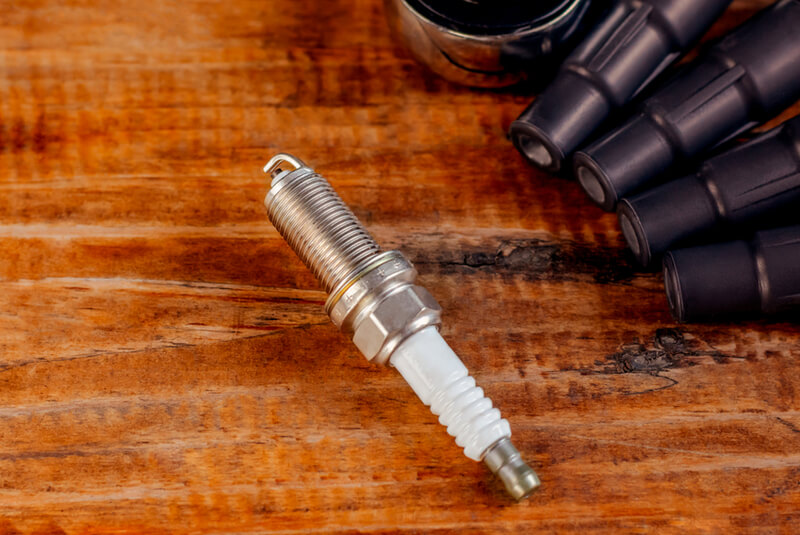
In this article, you'll learn everything there is to know about changing spark plugs. In our step-by-step guide, we will cover every detail to make the whole process smoother for you. Before we make the jump, though, let’s see why you'd need to change your spark plugs in the first place.
Why Should I Change the Spark Plugs?
Spark plugs aren’t designed to last for the lifetime of the engine. All of them will stop working eventually, some sooner than others. And when a spark plug is worn out, several issues will start to emerge. Briefly, your engine might suffer from misfires, reduced fuel-efficiency, and diminished overall performance.
More precisely, when one spark plug stops working, the cylinder won’t fire. For example, if your vehicle has four cylinders, it will suddenly become a three-cylinder engine. When this happens, your vehicle will become much slower, the engine will start to stutter and might even stall, especially on inclines.
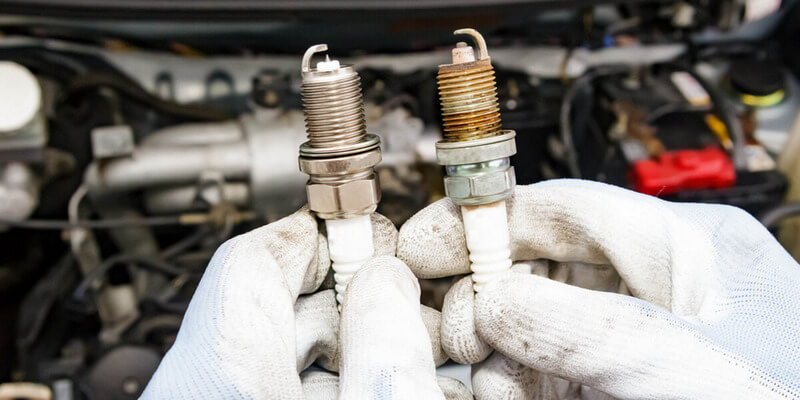
On top of that, your car will start to consume much more fuel. That is because the three working cylinders must work harder to overcome the losses in the cylinder with a bad spark plug. Furthermore, when one spark plug doesn’t work, the motor will have a rough idle. If another spark plug fails, the engine might have trouble starting, especially in cold mornings.
Finally, using an engine with a bad spark plug can also damage the catalytic converter. And trust us, changing the catalytic converter is much more expensive than replacing the spark plugs.
To prevent all these things from happening, we recommend changing your spark plugs on time. By doing that, you’ll ensure that your vehicle always runs smoothly and provides you with the best performance and fuel economy possible.
When to Change Spark Plugs?
We strongly recommend following the instruction from the owners’ manual. Usually, spark plugs need to be replaced every 60,000-miles on average. However, depending on the vehicle, you might need to change spark plugs every 40,000-miles, or 80,000-miles. That is, of course, if you use the same spark plugs like the OEM ones.
If you replace the spark plugs with another make, that might change. Not every spark plug lasts as long, and it all depends on the materials used. Copper spark plugs are the least expensive and they usually last for 25,000-miles. They were used on older vehicles mostly. If you replace them with another pair of copper plugs, use them only for 25,000-miles.
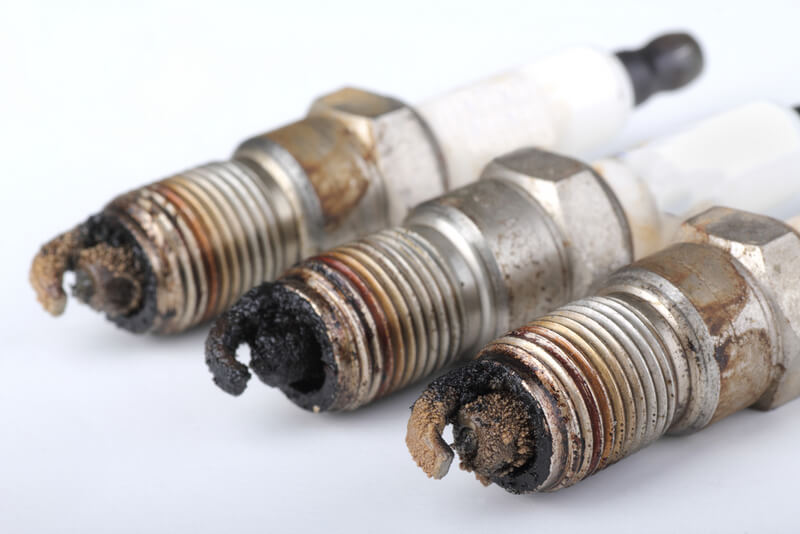
Platinum spark plugs last a little longer and find use in modern engines. Depending on the model, a platinum spark plug will last from 50,000-miles to 80,000-miles. However, these plugs are typically a tad more expensive than copper plugs.
Finally, if you don’t want to change spark plugs very often, you should try iridium models instead. Some high-end iridium plugs can last up to 100,000-miles. However, they also cost more than both copper and platinum plugs.
Can I Replace Spark Plugs on My Own?
Of course! I’ve been replacing the spark plugs on my cars since forever, and I’m sure that you can too. That way you can spend more on the plugs rather than paying the mechanic to change them. And you’d be surprised how much you’d pay for labor.
Car dealerships, for example, charge up to $100 in labor to change spark plugs! Independent repair shops usually charge much less – almost half the price. However, that’s still an awful lot of money that you can spend on purchasing high-quality plugs that will last forever.
With that said, be sure that you select the correct plugs for your car. Check our article on spark plug cross-reference to learn how to do that.
Tools Needed for the Work
You can’t replace the spark plugs in your engine with bare hands. You will need a complete toolset to do the work properly. Fortunately, you can purchase spark plug replacement tools sets online – they should include everything you need. Be sure that the set has a socket and a flexible extension for easier removal of the plugs. The socket should be the same size as the thread diameter of your spark plugs. If not, you won’t be able to remove the plugs.
Additionally, puller pliers and gap gauge would be helpful if you want to get into more detail. Of course, every time you work on your car, we recommend using protective gloves, goggles and a towel for cleaning.
How to Install Spark Plugs (Step-by-Step Guide)
Before you start changing the spark plugs, make sure that it cools down. The spark plugs can get very hot pretty fast after you start the engine. Hot spark plugs can be hard to handle, and you can burn yourself from other places, like the engine block or exhaust manifold. Be sure to wear protective gloves.
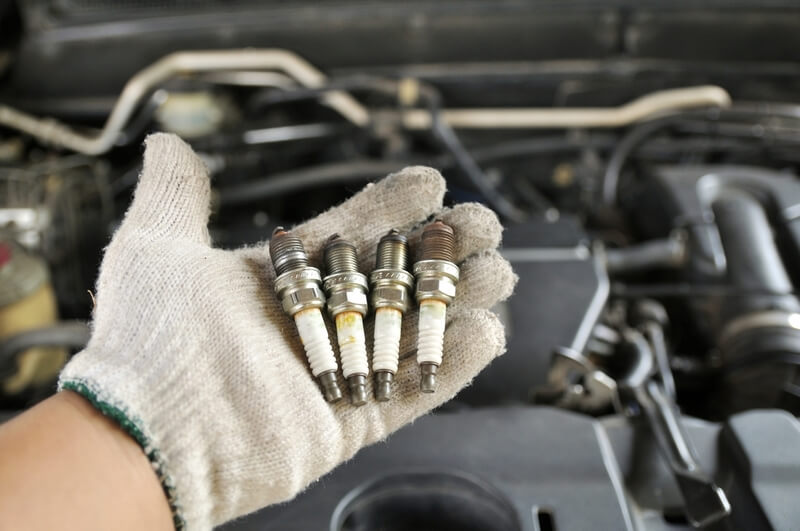
Spark Plugs Location
Obviously, you first need to locate the spark plugs before changing them. If needed, remove the plastic cover on top of your engine. On four-cylinder and inline-6 engines, the spark plugs are usually positioned on the top or slightly on the side. That said, on flat-four and flat-six engines (Subaru and Porsche), the plugs are on both sides of the engine. On V6 and V8 motors, the spark plugs are separated in two rows on both sides, but still near the top.
Removing the Old Spark Plugs
- Clean the area around the spark plug. When you remove the plugs, the surrounding debris can easily enter the engine and damage internal components.
- Depending on whether your car is equipped with spark plug wires or coil-on-plugs, the method will differ slightly. On engines using wires, simply remove the wire plug from the top of the spark plug by gripping it tightly at the bottom. Never pull the wire itself – it can be easily damaged. With coil-on-plug systems, you'll need to remove the small 10mm screw holding the coil down. The electrical connector might need to be removed too to allow the coil to come out.
- If you want to remove all of the spark plugs, be sure to mark the cables numerically. Putting the wires in the wrong order can damage the engine, or it will not work. On a coil-on-plug system, the coils can be interchanged but the connectors need to stay in the right location.
- Use a socket wrench, an extension, and a ratchet to unscrew the plugs. When near the end, use the other hand to protect the spark plug from falling.
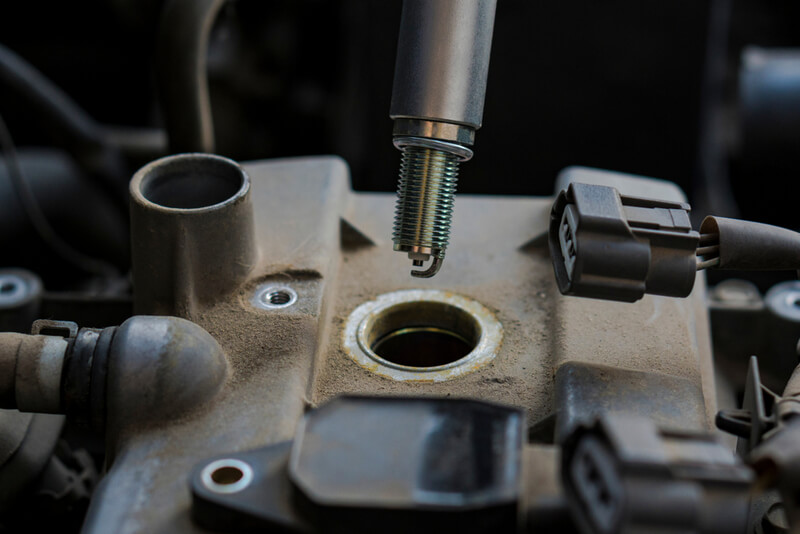
Installing New Spark Plugs
- Measure the gap between the two electrodes of each new spark plugs before reinstalling them. It's not uncommon for plugs to be hit during transport and the gap might be out of threshold. Use a spark plug gap gauge and adjust the gap accordingly.
- Put anti-seize lubricant on the tread of the new spark plugs before inserting them in the head. By doing this, you will ensure that they will unscrew easily later on.
- Insert the new spark plug inside the socket wrench. Use the other hand to hold it in place, so it doesn’t fall. Then, gently position the spark plug inside the hole on the head of the engine.
- Screw the plug into place. If the process doesn’t go smoothly, make sure that you positioned the spark plug correctly. Otherwise, you might damage the tread inside the head of the engine.
- Put the wire plug over the spark plug. Grip tightly near the bottom and make sure it’s the correct cable.
Get a digital factory repair manual for your car and change your own sparkplugs!
